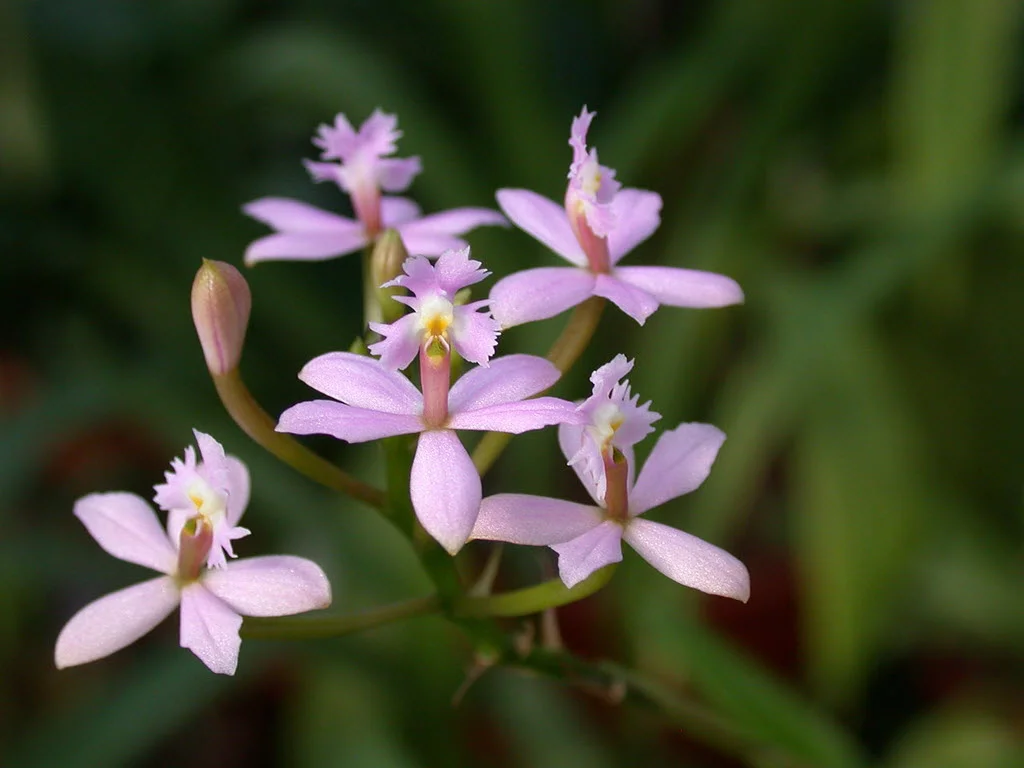Table of Contents
Pronunciation: frag-mi-PEE-dee-um
Other Names: Lady Slipper Orchid
Introduction
The Phragmipedium Orchid is set apart from the majority of other orchids due to the fact that it has two fertile stamen instead of one. These two stamen fuse together and form a column that contains a style and one central stamen that resembles a shield.
Phragmipedium Evening Glow Orchid
These large orchids can grow an inflorescence that is up to three feet tall, and the large, showy flowers can grow up to thirty inches across. They typically come in bright orange, yellow, green, brown, or magenta with purple patterns.
Temperature
These orchids are native to Mexico, Brazil, and Bolivia, and their temperatures should reflect this to ensure they grow. During the daytime hours, you want your temperatures to range between 70°F and 85°F (21°C to 29°C). The nighttime temperatures can cool slightly, but they don't do well in constant cooler temperatures. During the night, your temperatures can range between 55°F and 60°F (13°C and 16°C). These temperatures do vary from species to species.
Light
In the hotter summer months, this orchid likes partial shade. If you live in the northern hemisphere, place them in a south or east-facing window, and if you live in the southern hemisphere, place them in a north or east-facing window. This way, they'll get the bright morning sunlight and shade in the afternoon.
During the cooler winter months, your orchids require more light throughout the day to ensure they stay at their optimal temperatures. You still don't want to give them direct sunlight, but they should stay in the sun through the early afternoon.
Water and Humidity
Your water levels depend on the species of Lady Slipper orchids. You can give them a good soaking in the morning every other day and mist them again at night if the temperatures are warmer. You can even set your orchid's pot in a shallow basin of water and change it two or three times a week. Also, flush your orchid twice a week when you switch out the water basin.
These orchids usually grow in swampy regions, so they're used to a lot of water with minimal drying out time. You also want to try and keep your humidity levels around 70% to 75% year-round.
Feeding
Fertilize your orchid with a very well-balanced fertilizer mix that is water-soluble at 150 to 200ppm. You want to apply your fertilizer starting in October and going through May — the Phragmipedium orchid's growth period.
You want to fertilize your orchid at least once a week and ensure that you water it at least twice between fertilizer applications. This will work to remove any residual salts that may be present, and this can prevent salt burns. Stop fertilizing during the hot summer months as your orchid is more prone to salt burns from taking in too much fertilizer.
Potting
Your potting medium should be fairly porous as this allows it to support your orchid's roots while stopping it from getting waterlogged and allowing the roots to breathe. You should mix five parts of medium fir-bark, two parts of Canadian peat, and one part charcoal.
You want to repot your orchid once a year because this will ensure that any residual fertilizer is washed away, and it'll refresh the potting medium. It's best to repot them in the spring months before the hot summer months set in.
Video
Brad of Brads Greenhouse & Gardening has a bright red Phragmipedium slipper orchid in bloom. He also talks about blooms, potting mix, water, lighting, repotting, and other care tips.
Aren’t lady slipper orchids fascinating? Discover more amazing plant facts as you read all about the different orchid variants.
Other Orchids You Missed











